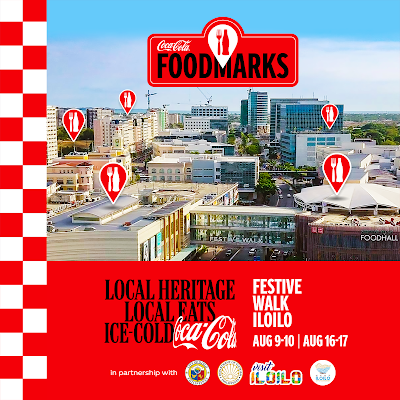The City of Love named as the next Coca-Cola Foodmarks Epicenter in the Philippines
The golden afternoon sun casts long shadows across Iloilo City’s Calle Real, where the scent of sizzling chicken inasal mingles with the salty breeze from the nearby Iloilo River. It’s a symphony of aromas, a feast for the senses, and a testament to why this vibrant city in the Philippines has earned its moniker as the ‘City of Love’. But love isn’t the only thing brewing in Iloilo; it’s a culinary cauldron where history, tradition, and a dash of the unexpected create a flavor profile that is uniquely Ilonggo.
After the successful debut of Coca-Cola (Philippines) Foodmarks in the world’s oldest Chinatown in Binondo, Manila last May, it’s no wonder that Iloilo City, with its vibrant culinary heritage, has been chosen as the next destination for this campaign.
Coca-Cola®, a long-time companion at Filipino tables, recognizes the magic woven into Iloilo’s food culture. Their Coca-Cola Foodmarks campaign, a celebration of the world’s most iconic culinary destinations, has set its sights on this city, the first in the Philippines to be crowned the ‘Creative City of Gastronomy’ by the United Nations Educational, Scientific, and Cultural Organization (UNESCO). The distinction underscores Iloilo's vibrant culinary traditions, use of indigenous ingredients, sustainable practices, and rich festival and food culture.
"Iloilo’s culinary heritage is a living tapestry,” says Pablo Medina, Senior Director for Franchise Operations, Coca-Cola Philippines as he raises a glass of the iconic beverage, its cool surface glistening in the warm light. "It’s about families bonding over La Paz batchoy, friends toasting over sizzling platters of kansi, and communities coming together to celebrate the harvest with hearty feasts. And an ice-cold Coca-Cola drink? Well, it's the perfect note to complete an unforgettable gastronomic adventure."
Medina emphasizes that naming Iloilo City as the second Coca-Cola Foodmarks epicenter in the Philippines is a fitting tribute. The Foodmarks experience in Iloilo unfolds like a culinary treasure map, beginning in the heart of K-Town, Festive Walk Iloilo, where a ceremonial ribbon-cutting marked the official launch. Coca-Cola executives and local officials alike were eager to share their city’s bounty, inviting visitors to embark on a food crawl throughout the neighborhood.
Follow your taste buds to bustling markets overflowing with fresh seafood, vibrant food parks serving up innovative Ilonggo street food, and cozy family-run eateries where recipes passed down through generations are lovingly prepared. Stop by Coca-Cola Foodmarks-recognized restaurants like Balay Bisaya Batchoy, Jeara’s Tinu-Om, Kap Ising Pancit Molo, and Mat-Mat Talabahan. Whether it’s the rich, slow-cooked flavors of stews like KBL (a hearty stew of pigeon peas or kadyos, pork, and unripe jackfruit) or the smoky char of grilled specialties like chicken inasal, every plate reflects a story. And with every bite, a sip of Coca-Cola elevates the experience, its bubbly fizz cutting through the savory notes, creating a harmonious balance of flavors.
“This gastronomic collaboration with Coca-Cola Philippines is not only a celebration of Iloilo’s culinary diversity, but also a promotion of our local food industry,” says Iloilo City Mayor Jerry P. Treñas. “We are happy to further Iloilo City’s status as a hub of culinary innovation that is complemented by the perfect partner: ice-cold Coke.”
The Coca-Cola Foodmarks journey doesn’t end with a single meal. Coca-Cola is hosting two weekends of Food Fests at K-Town, scheduled on August 9 and 10 and August 16 and 17. So come to Iloilo and join Coca-Cola in this culinary adventure, where every bite is a story, and every sip is pure magic.
Embark on an epic culinary journey with Coca-Cola Foodmarks. For more information and updates, visitcocacolafoodmarks.timeout.com or the official pages of Coca-Cola Philippines: Facebook,Instagram, and https://www.coca-cola.com/ph/en.

